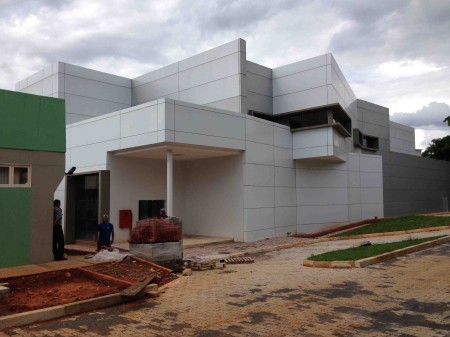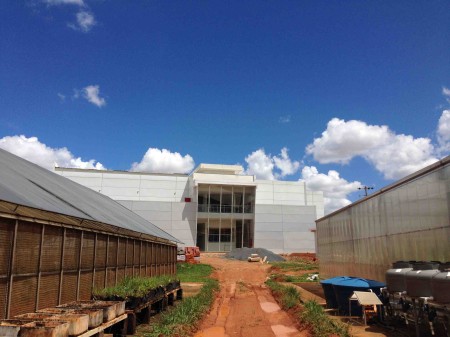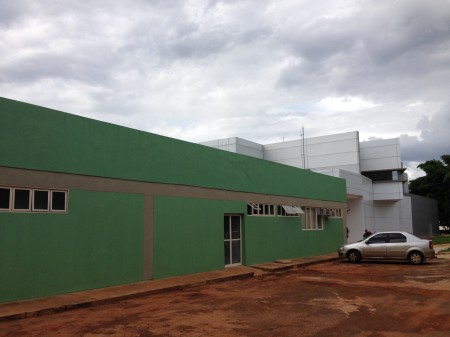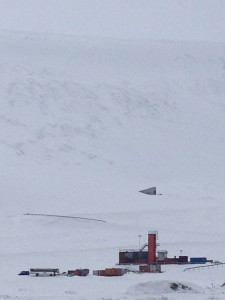If we missed reporting the opening of Embrapa’s new genebank, 1 it’s because the news seems only to have come out in the Brazilian press.
A modern building of over two thousand square feet, divided into two floors, will house one of the largest collections of genetic resources and is the third largest facility in the world in terms of storage capacity. Opened on the morning of April 24, the new genebank started the celebrations of 41 years of Embrapa.
If you search around, you’ll find various photos of the interior of the new building, but I could not find a single one of the outside. So here goes. It was taken a couple of months ago. I expect it’s all tidied up now.
For completeness, the green building in this last shot is the old genebank, which is next door to the new one.



